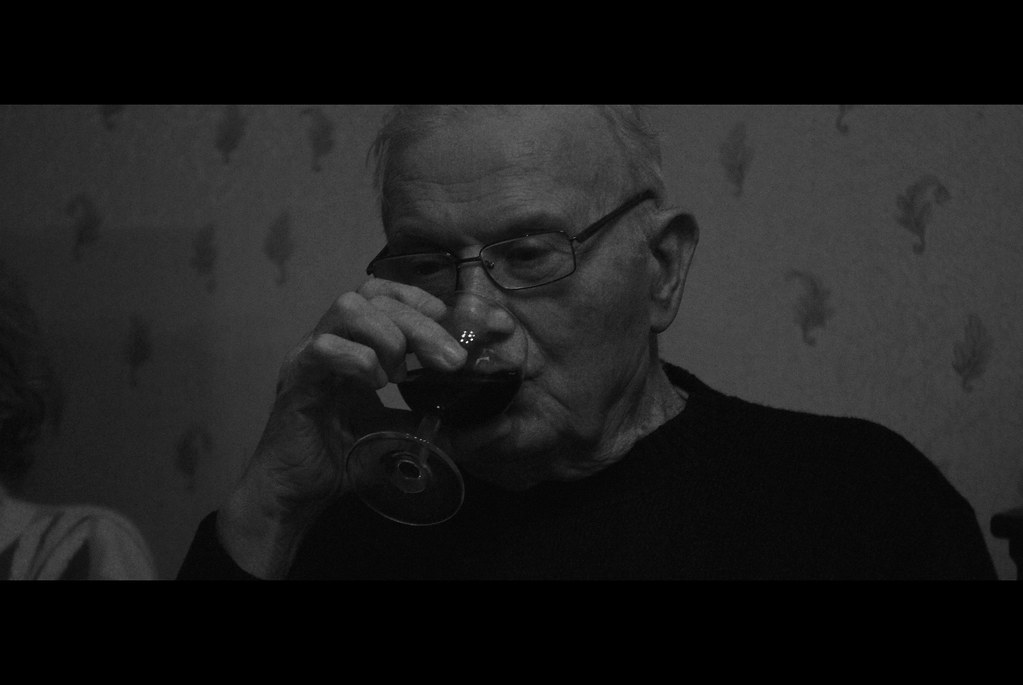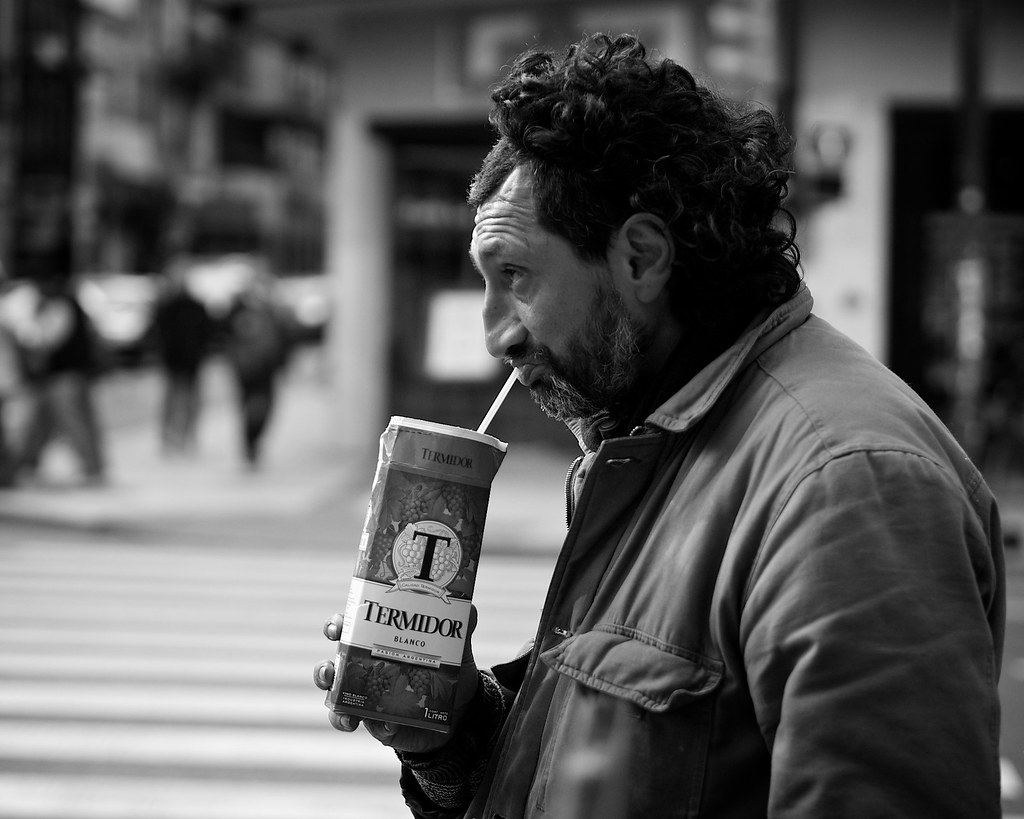One big area of research in wine is related to wine aroma perception and how this perception is similar or different depending upon a variety of factors. From cultural to physiological differences, wine aroma perception seemingly depends on the individual.
To summarize briefly, wine aromas go from the wine itself into the mouth cavity and interact with the saliva and oral bacteria of the person tasting the wine. These interactions then manifest into the individual’s perception of wine aromas, flavors, etc. Studies have shown that human saliva (including composition and flow rates) can influence wine aroma release and thus aroma perception in an individual.

As we age, our saliva composition and saliva flow rates changes. Specifically, studies have found that salivary flow rates decrease as we get older. Additionally, studies have shown the organic composition of saliva increases as we age compared to younger individuals.
While research has shown a link between saliva composition and wine aroma perception, there are no studies looking at how salivary changes as someone ages impacts wine aroma perception.
A new study, currently available online and to be published in the January 2021 issue of Food Quality and Preference, aims to try and bridge this gap in research. Specifically, today’s study compares saliva composition and flow rates between two groups of people: “young” and “senior”; after tasting wine.
BRIEF METHODS
There were 22 participants in this study – 11 per group. 11 participants made up the “young” group (ages 18-35; 5 women, 6 men). 11 participants made up the “senior” group (ages over 55 years old; 6 women, 5 men).
All participants were noted as being “healthy” and without any known health issues.
The wine used in this study was the commercially-available red wine 2014 Marques de Murrieta blend of Tempranillo (84%), Graciano (9%), Mazuelo (5%), and Garnacha (2%). This wine was selected for it’s dominant smokey and black pepper aromas.
Participants underwent training sessions to be certain they could identify the smokey and black pepper aromas in the wine. They also were trained on using a sliding intensity scale. Training sessions were mostly successful – all participants were successfully trained to identify the black pepper in the wines, however, only 18 out of 22 were successfully trained to identify the smokey aromas.
Saliva was collected immediately before the wine tasting. Participants were asked not to drink, eat, or smoke 1 hour prior to the start of the study.
Salvia flow and saliva pH, saliva protein content, protease activity, and amylase activity were calculated.
For the wine tasting, participants were asked to take the whole 15mL wine sample into their mouths, rinse, and then spit after 5 seconds. After spitting, participants were asked to swallow the saliva that remained in their mouths.
After swallowing the saliva, the aroma intensity evaluation begun – they would indicate with a cursor along a 15cm unstructured scale as the smokey or black pepper aromas remained in their mouths, how this aroma changed, and when it finally became undetectable.
SELECTED RESULTS
- The “senior” group showed lower salivary flow
and higher salivary protein content than the “young” group.
- Protease and amylase activities trended higher in the senior group as well, but they were not statistically significant.
- Aroma intensity scores were reported as higher in the senior group than the younger group for both aromas studied.
- For the smokey aroma, salivary protein content was positively and significantly correlated with maximum perceived intensity, and salivary flow was negatively correlated with maximum perceived intensity.
- For the black pepper aroma, salivary protein content was positively and significantly correlated with the time to maximum perceived intensity, and salivary flow was negatively correlated with maximum perceived intensity, and duration of time the aroma was perceived.
CONCLUSIONS
Overall, this study showed that the older “senior” group exhibited lower salivary flow rate when compared to their younger counterparts, which was not at all surprising given the state of current research related to the subject.
The reason why the salivary flow rate would be lower in older people is less understood. There are many theories, but none of which were really controlled for in this study and thus unable to definitively answer. Various diseases, medications, lifestyle factors, physiological changes, and dental status (and possibly more) could be why salivary flow rates are lower in older people, but one can only guess since it was not part of this study to determine that.

Interestingly, this study showed that the older “senior” group showed significantly higher perception scores for both smokey and black pepper aromas. Specifically, the older group rated both these aromas as more intense and for lasting longer than the younger group.
While salivary flow rate is diminished in older individuals, for some reason, aromatic recognition and intensity were better than their younger counterparts. Lots of things can be going on here – for one, experience. There’s a good chance the older participants have had more wine tasting experience in general than the younger group simply based on their time spent on earth as a legal drinking adult, so perhaps they are just better able to recognize the aromas. Perhaps these two aromas in particular are “easier” to identify in general – perhaps the older cohort would not be able to identify other aromas as intensely (or maybe they could – no idea).
This study was too narrow to expound on any of the reasons why the results happened the way that they did, so one can only speculate. So, the older participants had lower salivary flow rates yet were able to recognize the aromas for longer and more intensely than the younger cohort. Why? As I just mentioned, maybe it’s because they were more experienced? Perhaps having LESS saliva in their mouths intensifies the flavors perceived by the taste buds? (This is a wild guess and salivary science is not my field).
Other than the things already mentioned, there are two other things about this study that make one take the results with a grain of salt. One being the sample size. Super tiny. Only 22 participants total – 11 per group. Also, with the only prerequisite being that participants are “healthy”, that leaves quite a lot uncontrolled.
Finally, the study design in and of itself is not ideal for answering aging-related questions. The researchers themselves acknowledged this, and more or less agreed there is a better approach to answering these questions, however, the method that they choose to use was likely the best available for producing somewhat fast results for further study. Specifically, a longitudinal study of the same cohort of individuals over time would be the better design for this type of study. Evaluate salivary characteristics and aroma perception abilities when participants are young, then track them over time as they got older to see how these characteristics and perceptions change (or don’t change) over time. Comparing the same individual over time would lead to more conclusive results than comparing two unrelated groups that have unknown comorbidities or other uncontrolled physiological or lifestyle characteristics potentially mucking with the results.

Despite my beefs with the study, it was interesting as a pilot experiment – at least to get some feelers out there to get a sense of what might be going on. As the researchers suggest – and I agree – more follow-up, particularly a longitudinal-style study, is needed to further understand these results and gain more knowledge into how our tastes change as we age.
Source:
The post How Age Affects Salivary Flow and Aroma Perception in Wine Tasting – A Preliminary Study appeared first on The Academic Wino.


















